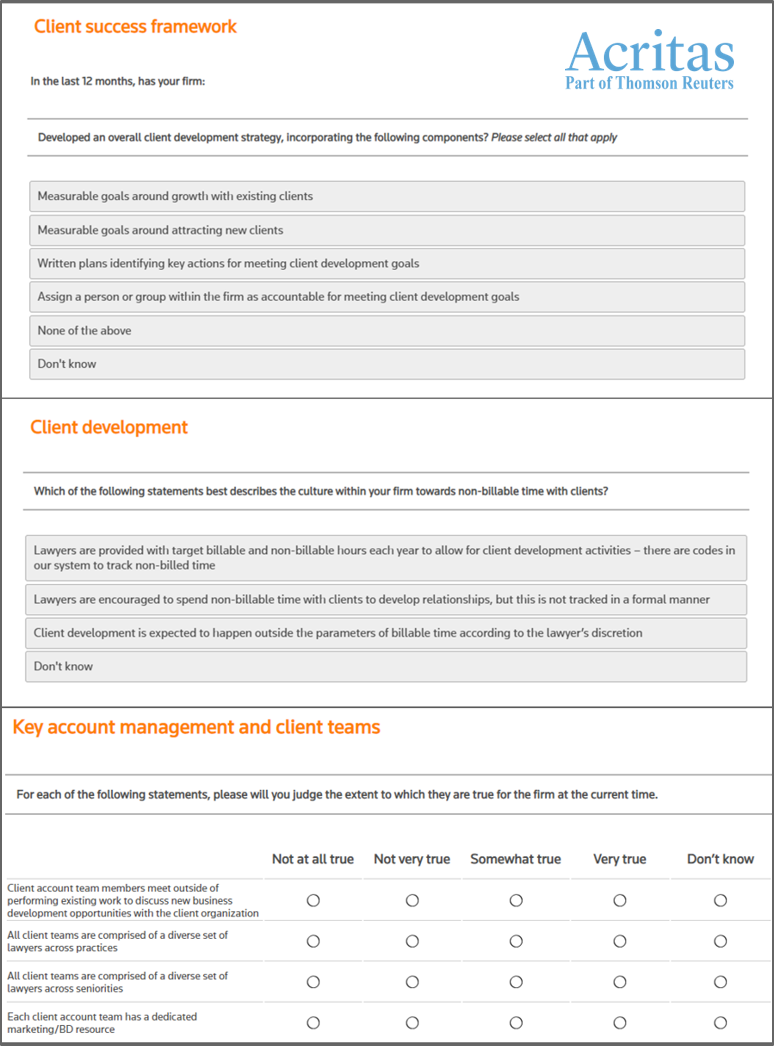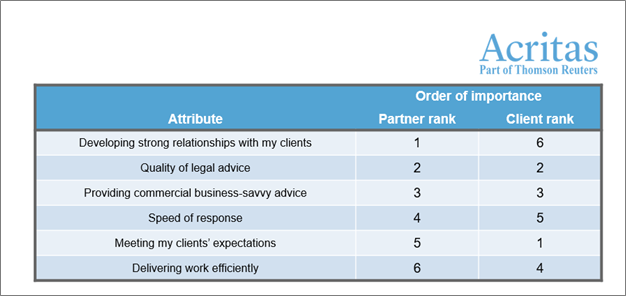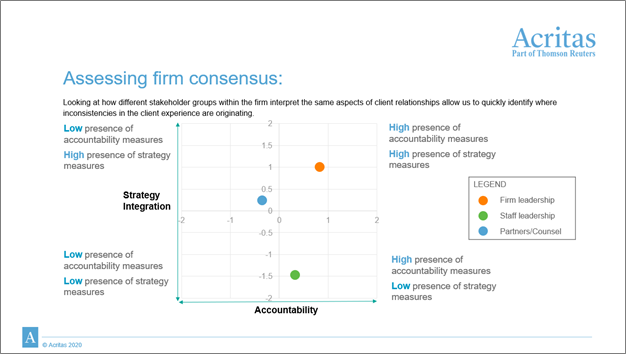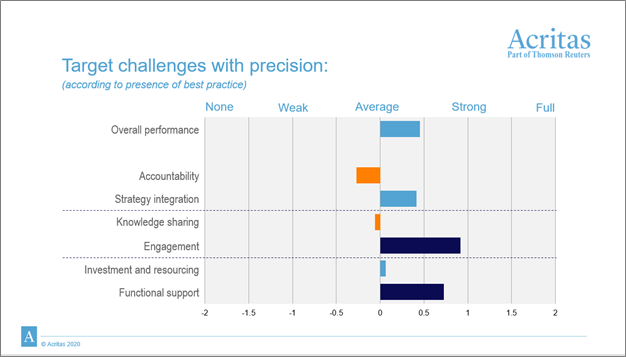Improving client relationships is often top-of-mind for most law firms, and we've identified several steps that firms can take to ensure success in 2021
Improving the client experience is perennially top-of-mind for most law firms — and as we head into 2021, it’s more important than ever. Throughout the pandemic, corporate general counsel have said they are more likely to use those firms with which they already have an existing relationship. However, clients use dozens of law firms on an ongoing basis, and to stand out on this crowded roster, firms must ensure their client experience is outpacing others.
4 steps to accelerate your client relationships
To that end, we offer four ways you can improve your client relationships and impress those GCs.
1. Assess your existing client relationship strategies before the client does
Most law firms already have established programs around client relationship management — ranging from client feedback and service standards to relationship development and client teams. But few firms have the data and benchmarks to understand whether their internal processes are going to get them the external results they seek.
For example, end-point key performance indicators (KPIs), such as client satisfaction ratings or Net Promoter Scores, are important to track the impact of client initiatives. However, these KPIs don’t provide preemptive data that firms can use to course correct. And knowing if the right activities are being effectively executed to achieve the end results desired is needed early in the process to ensure that your client relationship initiatives are not jeopardized.

2. Identify opportunities for improvements
Roadblocks are an inevitable component of any initiative and finding the right roadblock to remove is the key to outpacing competitors. While every firm is unique in its culture, approach, and focus, experience (and data) shows that the following roadblocks most frequently stand in the way of client relationship success:
- Misalignment in client and firm perceptions — If clients and the law firm are misaligned in what is deemed most important, success is next to impossible. Below, is an example of how lawyers at one law firm rated particular aspects of client relationship success compared to how their clients rated these same attributes.

- Inconsistent internal understanding of the firm’s strategy and approach to client relationships — Interestingly, when conducting the success evaluation with firms, Acritas frequently finds there are different perceptions of what is most important when you ask lawyers, firm leadership, and support staff. This means your success is undermined even before the initiatives get started as clients will inevitably receive an inconsistent experience when working with different individuals across the firm.

- Lack of core processes or structures that more effectively drive success — Reaching your business objective is more than knowing what steps to take. Execution is key. Unfortunately, many law firms often discover they are underperforming on one of the support structures tied to higher success.

3. Design a targeted approach to eliminating weaknesses
As overly simplistic as it sounds, once you know the specific roadblock facing your firm, course correction can be handled more effectively and efficiently.
For example, one firm’s evaluation uncovered an inconsistency in terms of what leadership thought the firm was doing when it came to creating and using client action plans. Leadership felt the firm had strong accountability and integration tactics in place, while partners were less sure.
Based on this finding, the firm can solve this by rolling out refresher trainings and communications around client action plans to better increase adoption and success of this particular tactic.
4. Track, measure, and continually improve your culture around client relationships
As with any initiative, tracking performance as a one-time step is a mistake. This is particularly true for law firms where leadership and lawyer demographics can change on a relatively frequent basis. As new lawyers join the firm or a change in leadership occurs, it is important to confirm the tactics being taken are continually aligned with the expected outcome of core business initiatives.
Frameworks add structure — even to abstract concepts like how successful your client relationships are. With time and investment capabilities at a premium, using a framework enables law firms to evaluate existing approaches to client relationship management and prioritize investments and time into the actions with the highest impact on business objectives.
For more on this subject, you can access a recent webinar from Thomson Reuters Acritas, Indomitable Client Growth, here. This webinar outlines the client relationship success framework and gives law firms the chance to hear, first-hand from a leading general counsel about what impact these programs have on clients and their selection of law firms.






